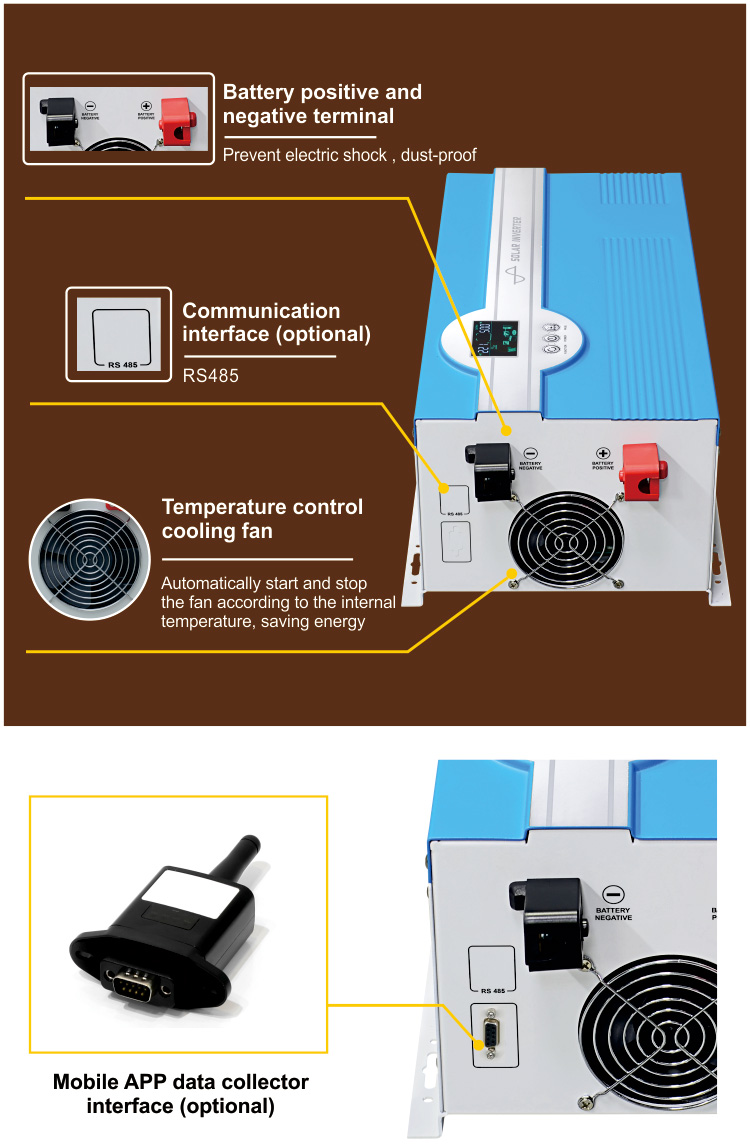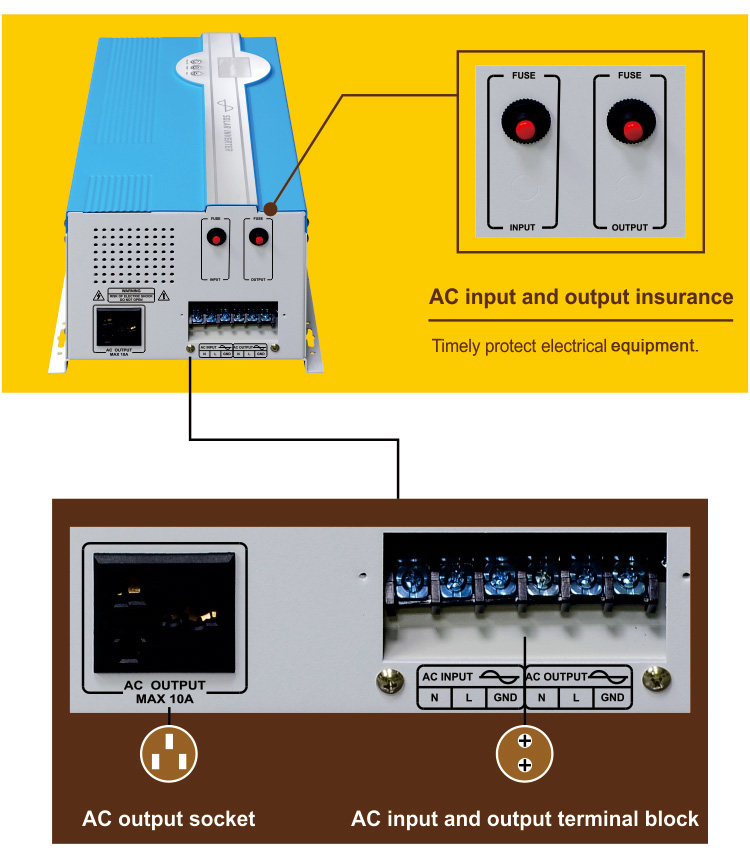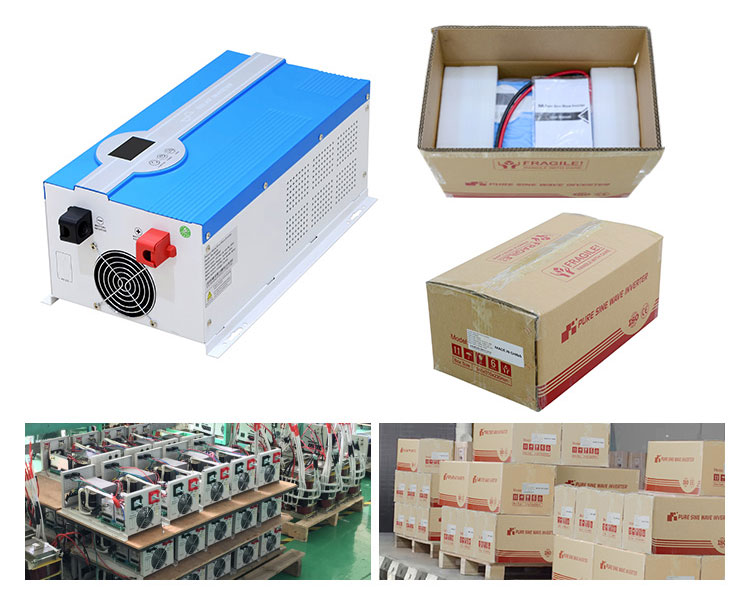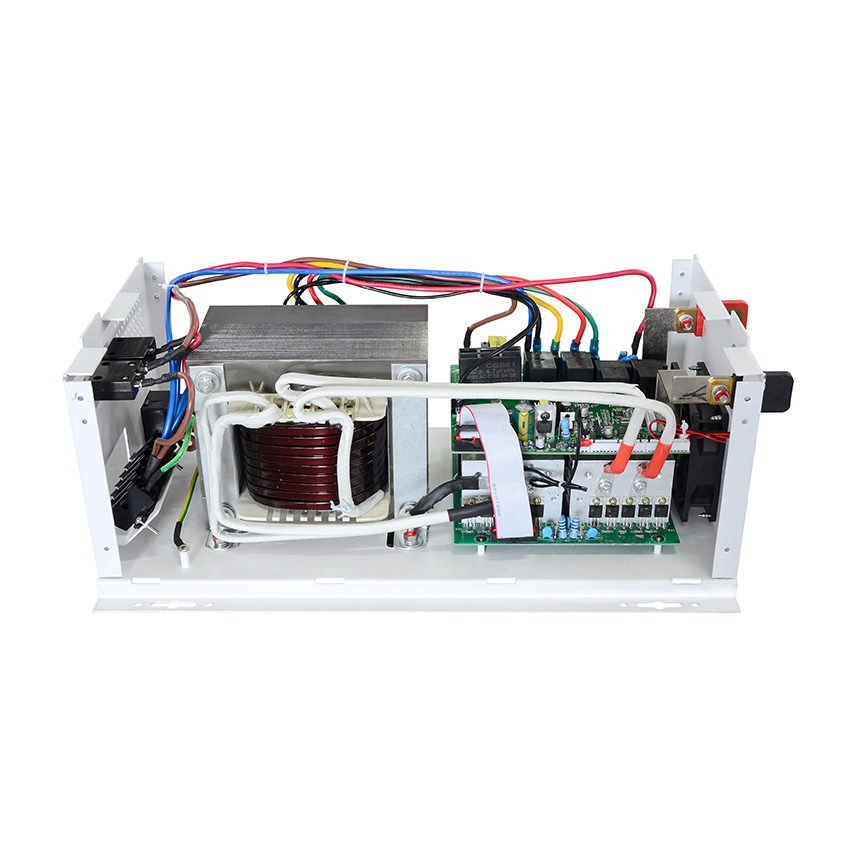
■ Motorhome Inverter Charger Feature
1 EI low frequency transformer, pure sine wave inverter output, strong impact resistance;
2 Dedicated micro-processing chip design, equipment operation speed is faster and more stable;
3 LCD display,real-time view of setting parameters and operating status;
4 AC charging current 0~30A adjustable,battery configurations are more flexible by users;
5 Three working modes(AC first,battery first,energy-saving mode);
6 Equipped with stable voltage and frequency output, stronger load compatibility;
7 Perfect all-round automatic protection function, stable and reliable performance;
8 Perfect fault code query function, convenient for users to monitor the running status in real time;
9 Support diesel or petrol generators, adapt to any tough electricity environment;
10 Motorhome inverter charger with RS485 communication port/APP (WIFI or GPRS) optional.
■ Motorhome Inverter Charger Specification
| Specification | |||||
| Model DA | 10212/24/48 | 15212/24/48 | 20212/24/48 | 30224/48 | |
| Rated Power | 1000W | 1500W | 2000W | 3000W | |
| Peak Power(20ms) | 3000VA | 4500VA | 6000VA | 9000VA | |
| Start Motor | 1HP | 1.5HP | 2HP | 3HP | |
| Battery Voltage | 12/24/48VDC | 24/48VDC | |||
| Size(L*W*Hmm) | 485*262*181 | ||||
| Packing Size(L*W*Hmm) | 580*310*240 | ||||
| N.W.(kg) | 16 | 18 | 20 | 23 | |
| G.W.(kg)(Carton Packing) | 18 | 20 | 22 | 25 | |
| Installation Method | Wall-Mounted | ||||
| Parameter | |||||
| Input | DC Input Voltage Range | 10.5-15VDC(Single battery voltage) | |||
| AC Input Voltage Range | 85VAC~138VAC(110VAC) / 95VAC~148VAC(120VAC) / 170VAC~275VAC(220VAC) / 180VAC~285VAC(230VAC) / 190VAC~295VAC(240VAC) |
||||
| AC Input Frequency Range | 45Hz~55Hz(50Hz) / 55Hz~65Hz(60Hz) | ||||
| Max AC charging current | 0~30A(Depending on the model) | ||||
| AC charging method | Three-stage (constant current, constant voltage, floating charge) | ||||
| Output | Efficiency(Battery Mode) | ≥85% | |||
| Output Voltage(Battery Mode) | 110VAC±2% / 120VAC±2% / 220VAC±2% / 230VAC±2% / 240VAC±2% | ||||
| Output Frequency(Battery Mode) | 50/60Hz±1% | ||||
| Output Wave(Battery Mode) | Pure Sine Wave | ||||
| Efficiency(AC Mode) | >99% | ||||
| Output Voltage(AC Mode) | 110VAC±10% / 120VAC±10% / 220VAC±10% / 230VAC±10% / 240VAC±10% | ||||
| Output Frequency(AC Mode) | Tracking Automatically | ||||
| Output waveform distortion (Battery Mode) |
≤3%(Linear load) | ||||
| No load loss(Battery Mode) | ≤2.5% rated power | ||||
| No load loss(AC Mode) | ≤2% rated power( charger does not work in AC mode) | ||||
| No load loss(Energy saving Mode) | ≤10W | ||||
| Battery Type | VRLA Battery | Charge Voltage :14.2V; Float Voltage:13.8V( 12V system; 24V system x2 ; 48V system x4) | |||
| Customize battery | Charging and discharging parameters of different types of batteries can be customized according to user requirements (charging and discharging parameters of different types of batteries can be set through the operation panel) |
||||
| Protection | Battery undervoltage alarm | Factory default: 11V(12V system; 24V system x2; 48V system x4) | |||
| Battery undervoltage protection | Factory default: 10.5V(12V system; 24V system x2; 48V system x4) | ||||
| Battery overvoltage alarm | Factory default: 15V(12V system; 24V system x2; 48V system x4) | ||||
| Battery overvoltage protection | Factory default: 17V(12V system; 24V system x2; 48V system x4) | ||||
| Battery overvoltage recovery voltage | Factory default: 14.5V(12V system; 24V system x2; 48V system x4) | ||||
| Overload power protection | Automatic protection (battery mode), circuit breaker or insurance (AC mode) | ||||
| Inverter output short circuit protection | Automatic protection (battery mode), circuit breaker or insurance (AC mode) | ||||
| Temperature protection | >90°C(Shut down output) | ||||
| Alarm | A | Normal working condition, buzzer has no alarm sound | |||
| B | Buzzer sounds 4 times per second when battery failure, voltage abnormality, overload protection | ||||
| C | When the machine is turned on for the first time, the buzzer will prompt 5 when the machine is normal | ||||
| Working Mode | Battery First/AC First/Saving Energy Mode | ||||
| Transfer Time | ≤4ms | ||||
| Display | LCD | ||||
| Thermal method | Cooling fan in intelligent control | ||||
| Communication(Optional) | RS485/APP(WIFI monitoring or GPRS monitoring) | ||||
| Environment | Operating temperature | -10℃~40℃ | |||
| Storage temperature | -15℃~60℃ | ||||
| Noise | ≤55dB | ||||
| Elevation | 2000m(More than derating) | ||||
| Humidity | 0%~95% ,No condensation | ||||
| Note: All specifications are subject to charge without prior notice | |||||
■ Best Power Inverter Charger Details




■ Best Power Inverter Charger Wiring Diagram

Best power inverter charger for Car or RV use:

■ Best Power Inverter Charger Application

BigBear LLC motorhome inverter charger usually has the following two method of application:
1. Home Backup System:
When AC grid power is available, inverter charges battery, at the same time, AC grid power bypass through inverter to motorhome appliances, such as induction cooker, refrigerator, air-conditioner. When AC grid power is cut off, inverter will automatic transfer switch to battery power and convert DC to AC power.
2. Wind or Solar Power System:
The electricity generated by solar or wind energy is DC (direct current), inverter will convert DC to AC power. When battery power is lacking, it will automatic transfer to AC grid power for powering continuously.
■ Inverter Package and Delivery










